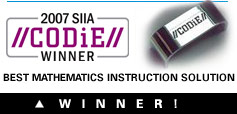 
|
 |
|
The new Larson Learning from Houghton Mifflin is a vital courseware solution built on years of research, that gets results—and builds confidence and competence in all students. |
|
 |
   |
 |
|
What Makes a Successful Grant?
|
|
Think carefully about why you want this grant. What concrete activity will funding provide that will have a positive impact on the learners involved? How will your project positively impact the learning environment? |
|
 |
|
|
Start with a specific need and identify a realistic solution. Then, develop a goal for your project, and way to assess the results against that goal. The need, solution, goal, project, and assessment must all match. |
|
 |
|
|
Brainstorm themes, possible projects, and technology needs. Your grant must stand out to be funded. Choose a topic or theme that is unique to your school or area. What could you and your students do that no one has done before or how could you do something in a new way? |
|
 |
|
|
Involve your students. They could design a logo or come up with a catch phrase for the project. Try an abbreviation or acronym that would draw attention to your project. |
|
 |
|
|
Link to research. Be sure your idea is linked to your need and that you can justify the approach you're using. Although it might be a practical approach, it should be connected to proven strategies and solid research. |
|
 |
|
|
Develop a concept map for a large-scale project. Break the project down into components that could be funded with various sources. For example, the technology for the project could come from one source, the staff development from another, and supplemental reading materials from a third funding agent. |
|
 |
What is No Child Left Behind? | What Makes a Successful Grant?
Grant Writing Style Tips
|
|
 |
|